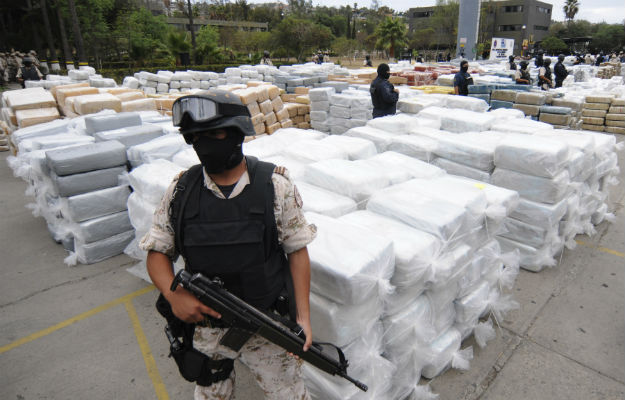By
Ricardo Swire
Argentina, Chile, Uruguay and the tip of Brazil make up the Southern Cone. Argentinian counter-narcotics teams battle South America’s second largest domestic cocaine market after Brazil.
A cheap highly addictive strain of cocaine, known on the streets as “Paco,” razes impoverished neighborhoods in Buenos Aires. Paco is actually “base paste” or cocaine sulfate, a form of the drug that precedes conversion to powder cocaine hydrochloride. After scientific transformation the substance is left over in small quantities.
In the past cocaine hydrochloride was smuggled from producer countries to Argentina. Today the country transits, consumes and produces the substance. Over the years the US Drug Enforcement Administration’s (DEA) “Operation Six Borders” and “Operation Andes III,” jointly managed by Interpol and the World Customs Organization (WCO), yielded marginal results.
Chile shares five hundred miles of border northward with top cocaine producers Bolivia and Peru. The country serves as transit point for drugs circulating within the Southern Cone. Traffickers recognize that Chile has lucrative overland drug routes and seaports. The country’s three thousand miles of coastline is less than sixty miles wide in some areas, a perfect transshipment qualification for drug consignments heading to Africa. Criminal echelons consider Bolivia an important aerial trafficking transit point for drug planes piloting Southern Cone routes.
A recent Argentinian internal security report documented a maximum of forty drug flights that secretly travel from Bolivia to Argentina per month. Participating aircraft transported four hundred to five hundred kilos of cocaine monthly. Argentina’s government finds itself in a position where aerial interdiction capabilities are retarded, by paucity of operational Air Force aircraft and qualified pilots. The entire Mirage jet fighter squadron was decommissioned, few FMA IA-58 Pucará and Lockheed Martin A-4AR attack aircraft remaining serviceable.
Records reflected multiple, clandestine, Bolivian flights that transported a minimum of twenty metric tons of drugs to Buenos Aires every day. A frequency that promoted Argentina, in the United Nations (UN) World Drug Report, to fifth largest waystation for cocaine exports to Asia and Europe. Criminal gangs control land transportation across Rosario, Argentina’s third largest city. In one instance Customs Officers intercepted thirty kilos of cocaine, cleverly absorbed in rice grains, stored in a Rosario warehouse. The consignment was destined for Europe via Africa.
Mexico’s Sinaloa Cartel operates an established network of bases in Argentina’s northern districts. As one countermeasure Argentina deployed six thousand Gendarmerie and Coast Guard officers, plus eight hundred Army Special Forces, to northwestern locations. Paraguayan traffickers favor the Parana River that connects to both Buenos Aires and the Atlantic Ocean. Thirty-two metric tons of marijuana, seized in two individual operations, were intercepted along the Parana waterway.
In early November 2016 the “Agata Border Operation,” a joint Brazil/Paraguay counter-narcotics mission, shut down one thriving drug syndicate. Ten tons of marijuana, a cache of firearms and fleet of luxury vehicles were seized. Brazil and Bolivia share 3,423 kilometers of border. Introduction of new methodology suggests that two Brazilian criminal syndicates, the “Red Command” and “First Capital Command,” have increased representation in Bolivia.
The resident envoys bankroll secret labs that intersperse Brazil’s border with Chiquitania in Bolivia. The facilities convert coca paste to cocaine hydrochloride. Uruguay’s transnational crime elements are Colombian and Peruvian gang members. Such individuals use Uruguay as a trafficking bridge to Europe’s cocaine markets. The crime figures also have powerful influence. Four years ago seventy-six Uruguay National Police officers were found guilty of accepting payola, the identified law enforcers smuggling guns and managing extortion schemes.



No Comments Yet!
You can be first to comment this post!